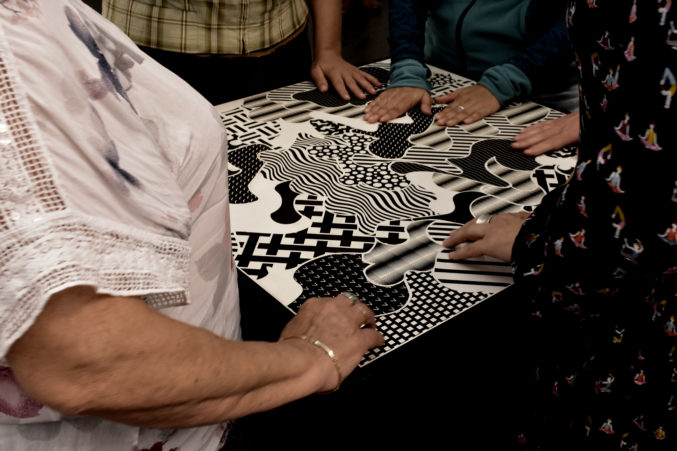
Shapereader
Ilan Manouach
Description
First presented in 2016, Shapereader is a non-alphabetic communication system originally developed for communities of visually impaired people. Shapereader is built on a growing repertoire of tactile ideograms (tactigrams) that provide haptic equivalents for all the semantic features, the conceptual functions and the textual features of a story. As an elementary system of meaning making, Shapereader has a syntactic ability to connect tactile symbols with meanings. It is not bound by the specifics of ethnic and indigenous alphabets, or Braille code. The design is based on criteria of simplicity, ease of memorization and tactile distinguishability. Shapereader is aimed at all users, regardless of their nationality, language or education level; it transposes semantic and syntactic structure knowledge to the reader’s fingertips.
The recent Shapereader workshops in Madrid, Barcelona, San Sebastian and Ghent introduced Shapereader as a tactile system for alternative graphic notation in music. The workshops introduced participants to the tradition of graphic scores. They explored these traditions with concrete examples and explored the different ways in which composers have inflected language to foster new social/musical interaction systems. The participants then used Shapereader’s existing resources and collaboratively composed a vocal score that was performed in front of an audience.
Based on the implications of these initial evaluation workshops, I developed an interest in further exploring the haptic knowledge and tactile memory mechanisms involved in Shapereader, by scaling the works from the initial, intimate context, using the participants’ fingers activated into architectural dimensions that are potentially captivating throughout their bodies. The installation explores the conditions for synthesizing community experiences through embodied notions of materiality and performativity. It draws on the lineage of graphic scores in Western contemporary music and extends this tradition by activating a depository of tactile knowledge that frames the human body as a reading/writing interface with affective capabilities. Both a tactile score and a scenographic installation, this new Shapereader implementation promises a “secularized”, diversified, non-normative and embodied scoring device that has the capacity to strengthen chains of meanings that reflect the needs and desired uses of the community, as well as the need for a safe space for sonic experimentation for mixed groups of artists.
